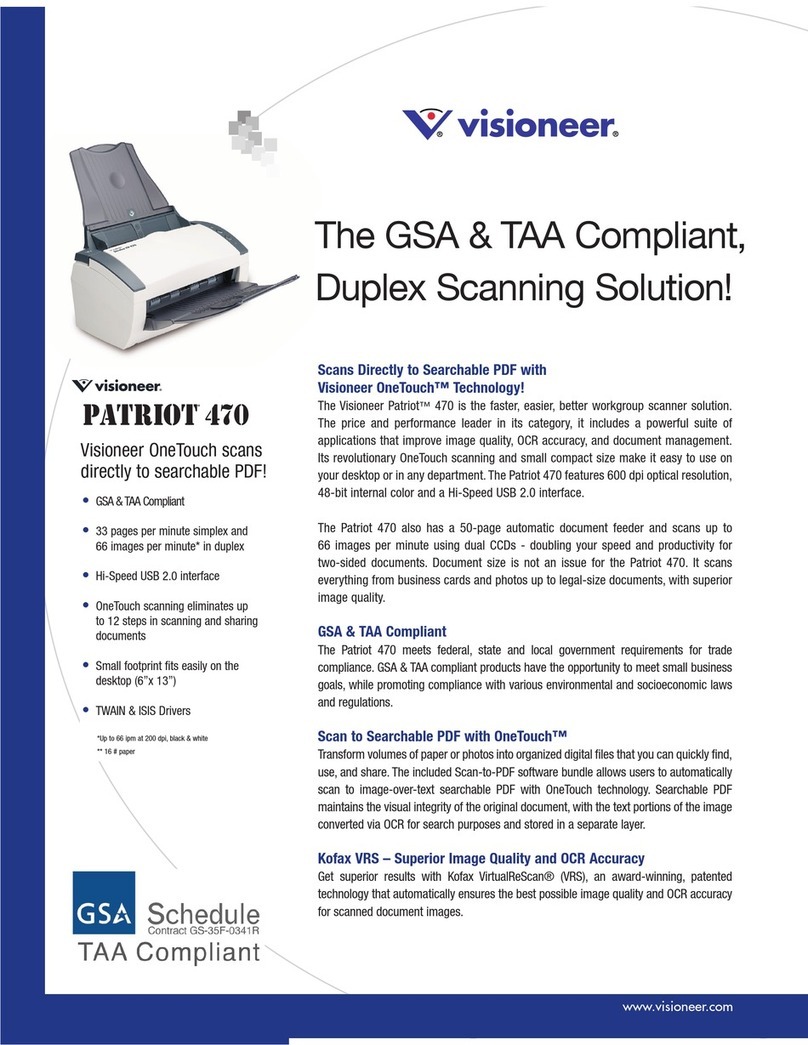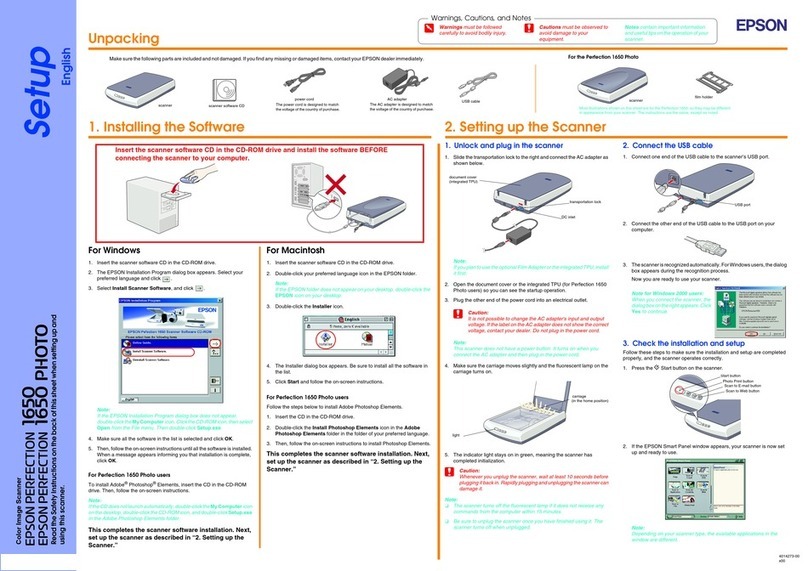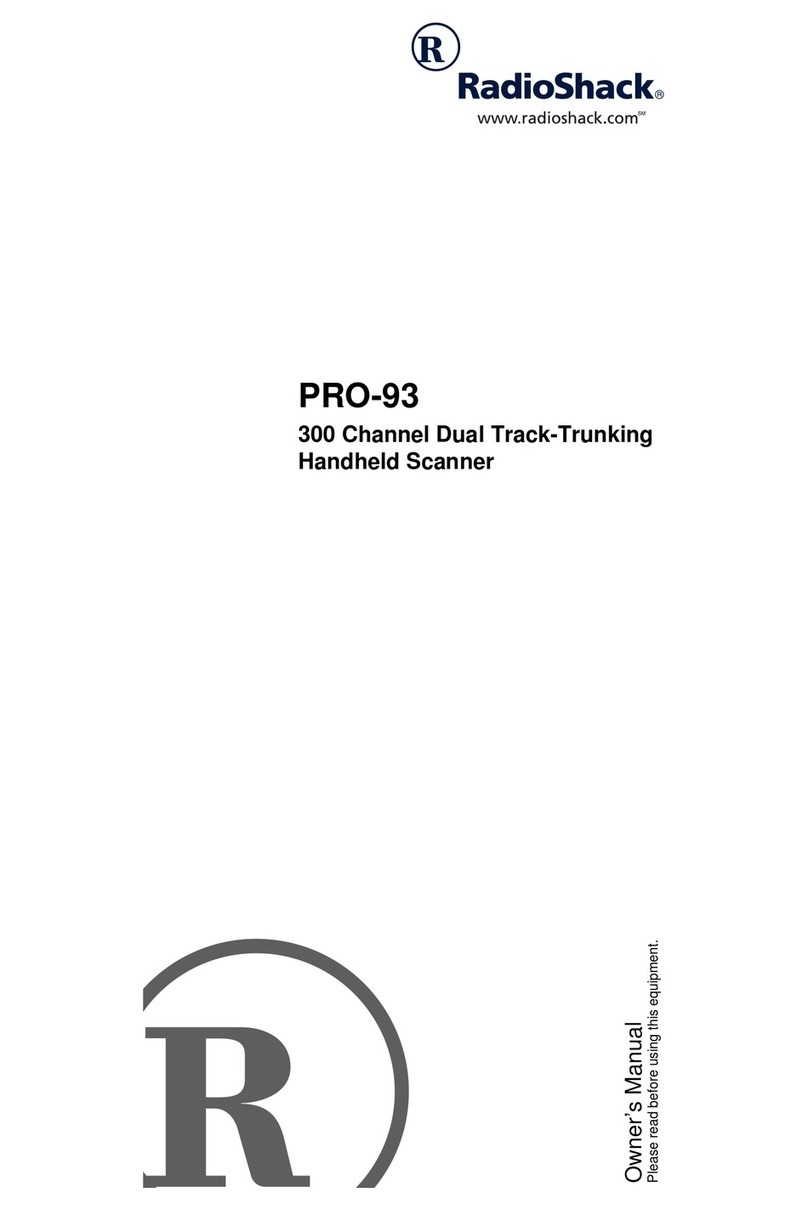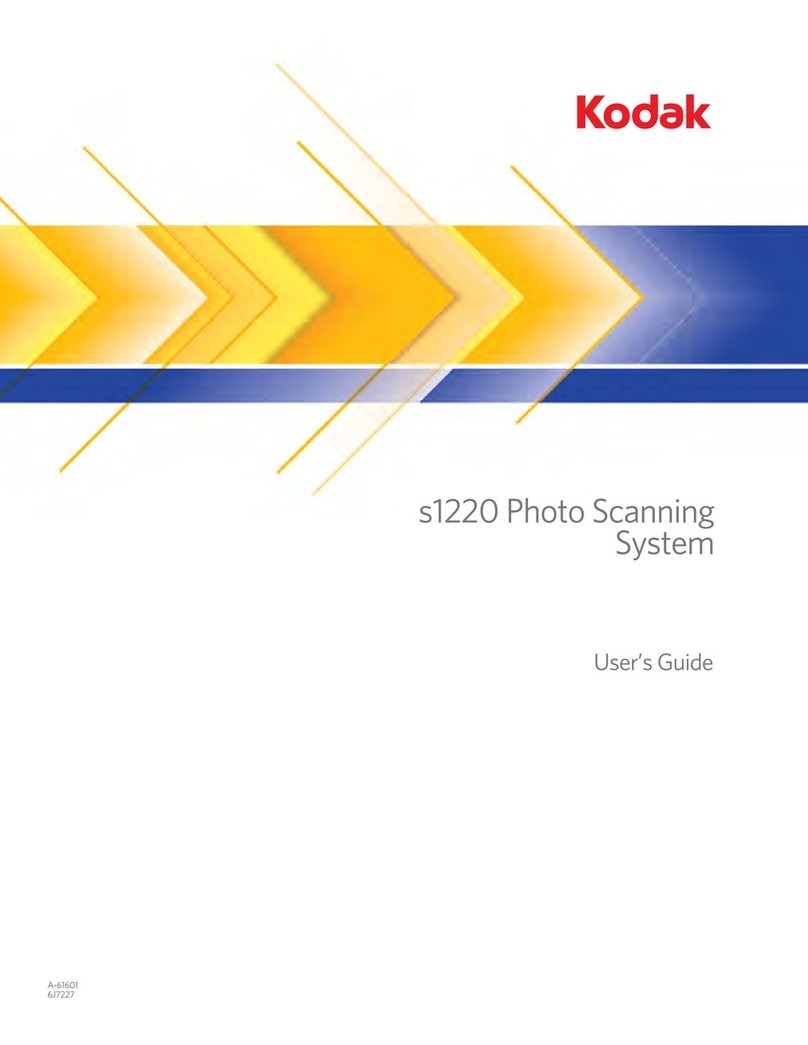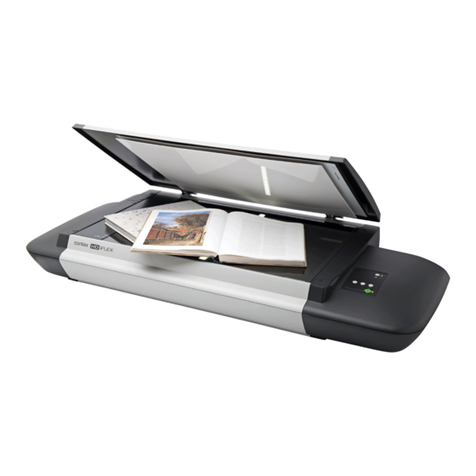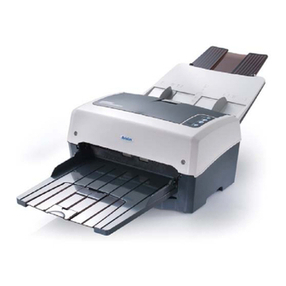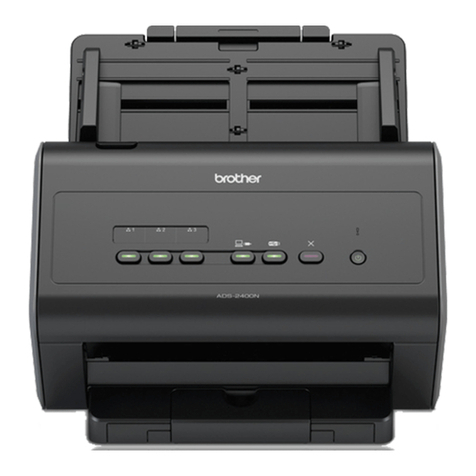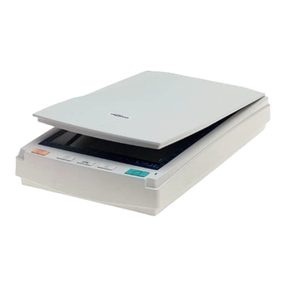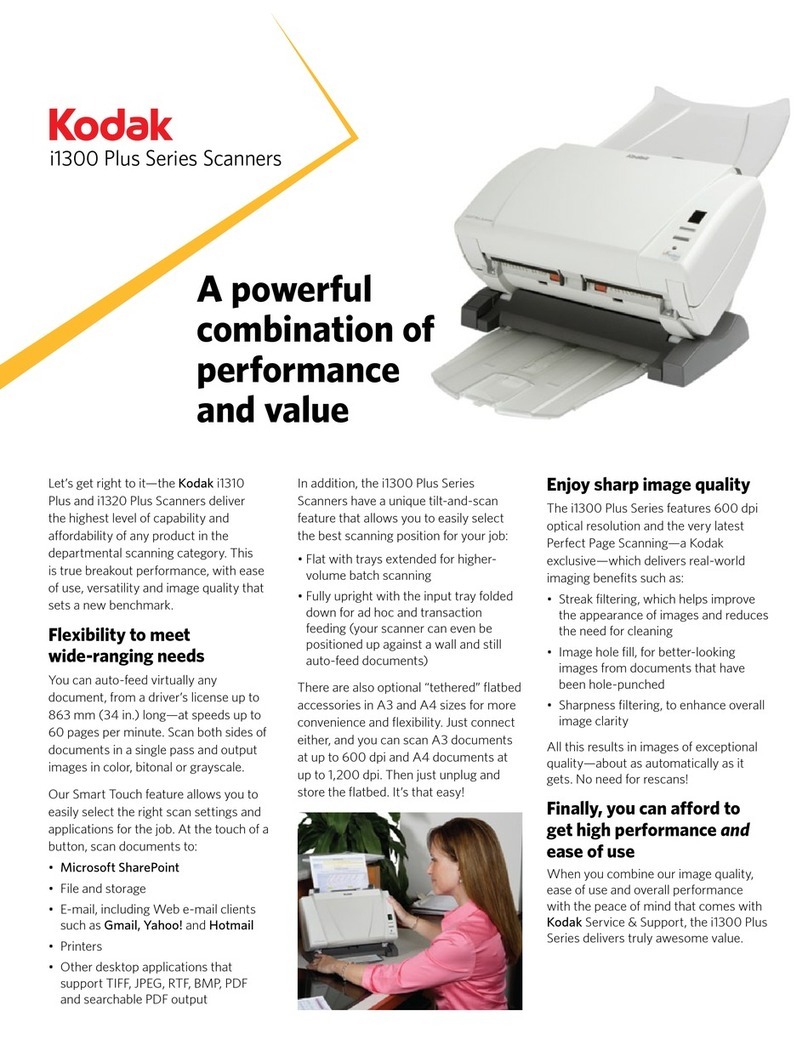KS KMPS-1-64 Series User manual


KMPS-1-64 Manual
12/18 KM 8000 Rev. A Page 2 of 40
Copyright © 2018 Kulite Semiconductor Products, Inc.
All Rights Reserved.
Contents
1 Specifications.................................................................................................................................. 4
1.1 Electrical Connector ............................................................................................................... 5
1.2 Part Numbers ......................................................................................................................... 6
2 Theory of Operation ....................................................................................................................... 7
2.1 Internal Connections .............................................................................................................. 8
2.2 Temperature Compensation .................................................................................................. 9
2.3 Pressure Output ..................................................................................................................... 9
2.4 Temperature Output ............................................................................................................ 10
2.5 Analog Output ...................................................................................................................... 10
2.6 Trigger................................................................................................................................... 10
3 Communication ............................................................................................................................ 10
3.1 RS-485 Communication ........................................................................................................ 11
3.2 Ethernet Communication ..................................................................................................... 11
3.2.1 UDP vs TCP.................................................................................................................... 12
3.2.2 Command List............................................................................................................... 12
3.2.3 Wrong Subnet............................................................................................................... 14
3.3 PTP........................................................................................................................................ 14
3.4 Command list........................................................................................................................ 14
3.5 MODBUS............................................................................................................................... 17
4 Using the KMPS ............................................................................................................................ 17
4.1 Modes................................................................................................................................... 17
4.2 Data Output Format ............................................................................................................. 17
4.2.1 TExt format ................................................................................................................... 18
4.2.2 TExt PErcentage format................................................................................................ 18
4.2.3 BInary format................................................................................................................ 19
4.2.4 BInary TEmperature format ......................................................................................... 19
4.2.5 BInary PErcentage format ............................................................................................ 19
4.2.6 IENA .............................................................................................................................. 19
4.3 Header Information.............................................................................................................. 20
4.4 Multi-Range Modules ........................................................................................................... 21
4.5 Channel Selection ................................................................................................................. 21
4.6 Pressure Data Rate ............................................................................................................... 22
4.7 Temperature Data Rate........................................................................................................ 22
4.8 Default Mode........................................................................................................................ 23

KMPS-1-64 Manual
12/18 KM 8000 Rev. A Page 3 of 40
Copyright © 2018 Kulite Semiconductor Products, Inc.
All Rights Reserved.
4.9 User Data Storage................................................................................................................. 23
4.10 Calibration ............................................................................................................................ 23
4.10.1 Auto-Zero...................................................................................................................... 23
5 Maintenance ................................................................................................................................ 23
5.1 O-Ring Maintenance............................................................................................................. 24
5.1.1 Module O-rings............................................................................................................. 24
5.1.2 Top Plate O-rings .......................................................................................................... 25
5.2 Other Maintenance .............................................................................................................. 25
5.2.1 Lubricate Purge Bock .................................................................................................... 25
5.3 Training................................................................................................................................. 26
APPENDIX A .......................................................................................................................................... 27
APPENDIX B .......................................................................................................................................... 31
APPENDIX C .......................................................................................................................................... 35
APPENDIX D .......................................................................................................................................... 36
APPENDIX E........................................................................................................................................... 40
List of Tables
Table 1: General Specification ................................................................................................4
Table 2 : Electrical Connector for RS485 KMPS-1-64-XX-R...................................................5
Table 3 : Connections for Ethernet KMPS-1-64-XX-E ............................................................5
Table 4 : Units Commands....................................................................................................10
Table 5 : RS485 Commands................................................................................................11
Table 6 : Ethernet Commands ..............................................................................................14
Table 7 : General Commands ...............................................................................................17
Table 8 : IENA Commands....................................................................................................20
Table 9 : Channel Parsing Example......................................................................................21
Table 10 : Sample rate commands .......................................................................................22
Table 11: IENA 64 Packet Format.........................................................................................32
Table 12: KMPS Status Word A............................................................................................33
Table 13: KMPS Status Word B............................................................................................34
Table 14 MODBUS/TCP Holding Registers..........................................................................38
Table 15 MODBUS/TCP Input Registers ..............................................................................39
List of Figures
Figure 1: Figure 1: Block Diagram of Scanner Electronics.....................................................7
Figure 2: Drawing of top of KMPS-1........................................................................................8
Figure 3: Schematic Diagram of internal Piping of KMPS-1....................................................9
Figure 4: Removing Modules ................................................................................................24
Figure 5: Module with O-rings...............................................................................................25
Figure 6: Removing Top Plate Screws..................................................................................25
Figure 7: Replacing O-rings ..................................................................................................25
Figure 8: Purge Block In Scanner .........................................................................................26

KMPS-1-64 Manual
12/18 KM 8000 Rev. A Page 4 of 40
Copyright © 2018 Kulite Semiconductor Products, Inc.
All Rights Reserved.
1 Specifications
SPECIFICATIONS
Available Channels
64
Pressure range
1 –100 PSID 15 –500 PSIA
Operating
Temperature Range
-65°F to 255°F (-55°C to 120°C)
Compensated
Temperature Range
-65°F to 255°F (-55°C to 120°C)
TEB over 12 months
< +/- 5 PSI TEB :± 0.20% FS. TYP
> +/- 5 PSI TEB :± 0.10% FS. TYP
Dimensions
Width: 1.5”
Length: 3.25”
Height: 2.0”
Weight
1.1 kg
Ambient pressure
30 PSIA
Sample Rate
275 samples/channel/sec
Connections
Electrical connector :
15 Pin subminiature D-shell
Pneumatic connector:
64 .040” Bulged tubulations
Excitation
8 - 32 VDC
Max Current
0.25 A
Resolution
24 Bit
Over Pressure
2X Rated Pressure
Burst Pressure
3X Rated Pressure
Analog Output
0.5 –4.5 Volts
Multiplexer Inputs
3.3 Volt Inputs with 10 kOhm Pull-Up resistor
To select pin pull to ground to unselect leave floating
Table 1: General Specification

KMPS-1-64 Manual
12/18 KM 8000 Rev. A Page 5 of 40
Copyright © 2018 Kulite Semiconductor Products, Inc.
All Rights Reserved.
1.1 Electrical Connector
Table 2 : Electrical Connector for RS485 KMPS-1-64-XX-R
Table 3 : Connections for Ethernet KMPS-1-64-XX-E
Pin
Function
1
+28V
2
Ground
3
RS-485A
4
RS-485B
5
X
6
X
7
Vout
8
MUX1
9
MUX2
10
MUX3
11
MUX4
12
MUX5
13
MUX6
14
Trigger
15
Factory Use
Pin
Function
1
+28V
2
Ground
3
RX+
4
RX-
5
Tx+
6
Tx-
7
Vout
8
MUX1
9
MUX2
10
MUX3
11
MUX4
12
MUX5
13
MUX6
14
Trigger
15
Factory Use

KMPS-1-64 Manual
12/18 KM 8000 Rev. A Page 6 of 40
Copyright © 2018 Kulite Semiconductor Products, Inc.
All Rights Reserved.
1.2 Part Numbers
The KMPS-1 part number is of the form:
KMPS-1-64-XX-Y-AA/BB/CC/DD
Where:
XX –Purge Option
AP –Air Purge Pneumatically activated purge block installed
NP –No Purge
Y –Communication Option
E –Ethernet
R –RS-485
AA –Pressure range of first module (channels 0 - 15)
BB –Pressure range of second module (channels 16 - 31)
CC –Pressure range of third module (channels 32 - 47)
DD –Pressure range of fourth module (channels 48 - 63)
If all ranges are the same then you can have just one pressure range indicated. If first two
modules are one pressure and second two are another than you can have just two pressure
ranges indicated. For all other orders all ranges must be specified. If all modules are
absolute or all are differential then it can be specified at then end but if they are different
then it must be specified for each module
Examples:
KMPS-1-64-AP-E-7BARD - 64 channels of 7 Bar differential with a purge and Ethernet
output
KMPS-1-64-AP-E-25D/50APSI - 32 channels of 25 PSI differential and 32 channels of 50
PSI absolute with a purge and Ethernet output
KMPS-1-64-NP-R-25/50/75/100PSIA -16 channels each of 25,50,75, and 100 PSIA with no
purge and RS-485 output.
KMPS-1-64-NP-R-100/50/XX/XXPSIA - 16 channels of 100 PSIA and 16 channels of 50
PSIA no modules in the last two positions. Please note that it is still a KMPS-1-64 not a
KMPS-1-32.

KMPS-1-64 Manual
12/18 KM 8000 Rev. A Page 7 of 40
Copyright © 2018 Kulite Semiconductor Products, Inc.
All Rights Reserved.
2 Theory of Operation
The KMPS-1-64 consists of 64 Silicon on Insulator(SOI) piezoresistive pressure sensors
mounted onto plates of 16 sensors each. These sensors are then connected to individual
pressure inputs via a manifold. The pressure sensors are grouped together in two groups of
eight per module for a total of eight groups of eight. Each group is connected to a multiplexer.
The output of the multiplexer is then routed through an analog amplifier which is then sent to
the inputs of a 24 bit delta/sigma analog to digital converter (A/D).
Each of these eight A/Ds then sends the digital information to a single microprocessor (P).
By switching the inputs of the multiplexer it is possible for the A/Ds to measure both the
pressure output of the transducer as well as the temperature of the transducer. In this way
the P can correct the pressure data for errors over both temperature and pressure.
Figure 1: Figure 1: Block Diagram of Scanner Electronics
When all sixty-four sensors are being polled the maximum data rate is 275
samples/channel/sec. However because the sensors are arranged in groups of eight it is
possible to increase the sampling rate by limiting the sensors that are scanned. For instance
if only sensor 1, 9, 17, 25, 33, 41, 49, and 56 (one per A/D) are scanned the data rate would
be 2000 samples/channel/sec. By selecting sensors from each of the eight different banks it
is possible to customize the data rate and number of channels available.
The sensors are numbered starting at 0 and going up to 63.
Pressure Sens
Pressure Sens
Pressure Sens
Pressure Sens
Pressure Sens
Pressure Sens
Pressure Sens
Pressure Sens
M
U
L
T
I
P
L
E
X
E
R
24 Bit
Delta
Sigma
A/D
Pressure and
Temperature
Data
Analog Out
Digital Out
Pressure Sens
Pressure Sens
Pressure Sens
Pressure Sens
Pressure Sens
Pressure Sens
Pressure Sens
Pressure Sens
M
U
L
T
I
P
L
E
X
E
R
24 Bit
Delta
Sigma
A/D
Pressure and
Temperature
Data
Sensor
Plate
Central
Electronics
Board
Micro
Controller

KMPS-1-64 Manual
12/18 KM 8000 Rev. A Page 8 of 40
Copyright © 2018 Kulite Semiconductor Products, Inc.
All Rights Reserved.
2.1 Internal Connections
The KMPS-1-64 has an internal purge manifold which allows for the KMPS-1 to be placed
either in measure mode or purge/calibration mode by supplying pressure either to the MSR
input or PRG input on the two ends of the KMPS (see figure 2). Under normal conditions 100
PSI is required to move the manifold but at temperatures below -40°F pressures as high as
200 PSI may be required.
In measure mode the front of each of the 64 sensors is connected directly to one of the bulged
tubulations on the top of the KMPS. If the sensor is differential the back is connected to a
reference manifold which is connected to one of the two reference tubes (REFA or REFB)
depending on which side of the scanner the sensor is on.
When the manifold moves into purge/calibration mode the sensors become disconnected from
the top tubulations. Instead all of the tubulations are connected to the purge input allowing
for high pressure air to be blown out of the tubes clearing away moisture or obstructions. At
the same time the front of all of the sensors are connected together and connected to one of
the calibration tubes (CALA or CALB) allowing for an in place calibration of the scanner.
WHEN IN CAL MODE IT IS IMPORTANT NOT TO APPLY HIGHER PRESSURE THAN THE
LOWEST RANGE SENSOR CAN HANDLE.
The backs of the sensors remain connected to the reference manifold which is still connected
to the reference input. In this way it is possible to calibrate higher pressure absolute sensors
by raising the pressure of both the CAL and REF1 inputs simultaneously so that no differential
pressure is applied to low pressure differential sensors.
Figure 2: Drawing of top of KMPS-1

KMPS-1-64 Manual
12/18 KM 8000 Rev. A Page 9 of 40
Copyright © 2018 Kulite Semiconductor Products, Inc.
All Rights Reserved.
Figure 3: Schematic Diagram of internal Piping of KMPS-1
2.2 Temperature Compensation
Both the pressure and temperature output is compensated inside the microprocessor using
coefficients programmed at the factory. All coefficients for these calculations are stored on
an EEPROM in each of the four modules. In this way a module can be replaced without any
programming. The user has access to the user gain (Gu) and offset (Ou) for each unit to allow
for adjustment but does not have access to temperature correction coefficients which are
programmed at the factory. The offset and gain can be changed using the SLope and OFfset
command. The UNits command automatically adjusts the full scale value to reflect the
difference between PSI and Bar.
2.3 Pressure Output
The pressure sensors are compensated using a fourth order compensation in temperature
and a third order compensation in pressure according to the formulae:
Offset = O = O0*T4 + O1*T3 + O2*T2+ O3*T+ O4
Gain = G = G0*T4 + G1*T3 + G2*T2+ G3*T+ G4
Linearity = L = L0*T4 + L1*T3 + L2*T2+ L3*T+ L4
Third Order = C = C0*T4 + C1*T3 + C2*T2+ C3*T+ C4
Pressure Out(% of Range) = Gu* (C*P3+ L*P2+ G*P) + O + Ou
Pressure Out (Engineering Units) = Pressure Out * Full Scale Reading
Pressure Inputs
Reference Manifold
Pressure
Sensors
Purge Input
(PURGE)
Cal Input
(CALA & B)
Reference
Input (REFA & B)
Ref
Input (REFA
& B)

KMPS-1-64 Manual
12/18 KM 8000 Rev. A Page 10 of 40
Copyright © 2018 Kulite Semiconductor Products, Inc.
All Rights Reserved.
2.4 Temperature Output
The temperature is read off of each sensor and then the raw output is converted to
temperature using a second order conversion
Tout= A2*T2+ A1*T + A0
This data is available for each sensor using the TEmperature command. The UNits command
automatically switches the temperature between Fahrenheit and centigrade.
UNit PRessure
arg
Sets or returns the pressure units. Valid values for arg are PSi or BAr. All
pressure readings will be expressed in this unit.
UNit
TEmperature arg
Sets or returns the temperature units. Valid values for arg are C or F. All
temperature readings will be expressed in this unit.
Table 4 : Units Commands
2.5 Analog Output
The analog output is available in Analog Mode. The channel number to output is selected via
the multiplexer pins. These pins are 3.3 volt tolerant and have a weak pull-up to 3.3 volts. A
pin is selected by pulling down to ground. For instance to select channel 3 pins 1 and 2 would
be pulled to ground and 3, 4, 5, and 6 left to float.
The analog output is from 0.5 to 4.5 volts for any channel. For absolute channels 0.5 volts
represents 0 PSIA and 4.5 volts represents the full scale of the channel. For differential
channels 0.5 represents the negative full scale pressure and 4.5 volts represents positive full
scale pressure.
2.6 Trigger
Triggered acquisition allows the user to simultaneously sample data from many scanners at
the same time. The trigger can be activated by bringing the trigger pin low or by sending a
trigger command. In standard trigger mode the data for all 64 channels is immediately output
after acquisition. In the polled trigger mode the data is taken and stored until polled by the
user. This can be useful to avoid data collision on an RS-485 network.
3 Communication
The KMPS digital output can either be RS-485 or Ethernet output. The advantages of RS-
485 are a simpler wiring scheme (2 vs 4 wires) and the ability to connect multiple units together
along a single bus (daisy chaining). Ethernet output has the advantage of being more easily
connected to existing networks.
Most commands are available in RS-485, TCP, and UDP communication. Those that are only
used in one type are listed separately under that protocol.
For RS485 commands are in the form of $AA X where AA is the address of the scanner and
X is the command. Commands can either be sent as the full word or only the first two
characters. There must be at least one space between the address and the command.
Another space is used between the command and each option.

KMPS-1-64 Manual
12/18 KM 8000 Rev. A Page 11 of 40
Copyright © 2018 Kulite Semiconductor Products, Inc.
All Rights Reserved.
For Ethernet the $ and address can be used or left off. Kulite recommends using the $ and
address is the user is using broadcast UDP with multiple scanners otherwise it is redundant
with the IP address.
3.1 RS-485 Communication
RS-485 communication works over a two wire twisted pair bus. There can be up to 256
KMPSs on a single bus with one computer (or other controller) to interrogate them. Because
all the devices are on a single bus it is necessary for each unit to have a unique two byte
address. Each KMPS will only respond when it is polled. To allow for faster data acquisition
a streaming data mode as well as a triggered data mode are available on the KMPS. By
default the RS-485 bus is ties up continuously during streaming to increase the maximum
data rate. The user can set the bus to be released between data bursts using the RS485
Release command, this will decrease the maximum speed at which the KMPS can stream. It
is recommended that when either of any of these modes are going to be used only one KMPS
per bus is used.
The only extra command needed for RS-485 communication is for setting the serial
communication setting which the scanner uses. It is important to have a baud rate high
enough that the data can be output at the data rate required.
RS485 BAud x
Sets or returns the baud rate used by the scanner 0-2400 1-9600 2-
57600 3-115200 4-460800 5-512000 6-921600
Set in programming mode only. Must reset to take effect.
RS485 PArity x
Sets or returns the parity used by the scanner EVen/ODd/MArk/SPace
Set in programming mode only. Must reset to take effect.
RS485 STop x
Sets or returns the number of stop bits used by the scanner 1 or 2
Set in programming mode only. Must reset to take effect.
RS485 RElease
ON/OFf
Sets or returns whether the RS-485 Bus is released during streaming.
Table 5 : RS485 Commands
3.2 Ethernet Communication
The KMPS supports both TCP and UDP communication. TCP allows for a direct connection
between the host computer and each scanner. A TCP connection requires both an IP address
and port number for each scanner. UDP is a connectionless protocol and can be sent to only
one or multiple scanners on a network (unicast vs multi/broadcast).
Because UDP is a connectionless protocol, it is recommended to use the time stamp when
acquiring high speed data because packets may be transmitted out of order by the network.
The KMPS will respond to both UDP and TCP commands at all times, it is not necessary to
set the form of communication. It is also possible to set the KMPS configuration via TCP and
stream data out using UDP.
The KMPS comes from the factory set into DHCP/AUTO-IP mode with a receive port of 18008.
In this mode the KMPS will find an IP address that is not being used on the network. The
KMPS may be found by using broadcast UDP or via the included KMPS Config program. The
KMPS will always respond to commands sent on to port 65001 with a both a broadcast and

KMPS-1-64 Manual
12/18 KM 8000 Rev. A Page 12 of 40
Copyright © 2018 Kulite Semiconductor Products, Inc.
All Rights Reserved.
unicast to the sender IP UDP packet on port 65002. This can be used to find the scanner
when the configuration is unknown.
3.2.1 UDP vs TCP
Both UDP and TCP can be useful protocols for communicating with the KMPS. TCP allows
for direct connection to each KMPS individually allowing for error checking as well as data
arriving in the order received with no extra delay. Because each KMPS on a network will have
its own unique IP address for TCP connections the address portion of the command is not
useful and all KMPS can be set to the same 00 address or the address can be left off. TCP
is the most straight forward and common type of connection and can be used in most
applications where the extra functionality of UDP connections is not needed.
UDP broadcast datagrams are useful in instances where many scanners are being used
simultaneously. In this case a single broadcast message can be sent to all the scanners
simultaneously. If address FF or the address is left off then all of the scanners will respond
no matter what their actual address is. The data received from all of the scanners can then
be separated using the time and address stamps or IP address. At the same time each
individual scanner can be polled separately using their unique addresses. Also because the
UDP datagram is much less complex than a TCP datagram there is much less overhead for
the network to handle.
Another method to separate individual scanners on a UDP network would be to make them
all respond to different ports. In this way a single message could be sent to all units on the
network but each one would respond to a separate part of a program listening on different
ports.
The UDP format also allows a user to issue the Announce command on the network. Each
unit will respond to this command with vital information allowing it to be identified. In this way
a quick scan of the network can reveal all of the available pressure channels.
To stream data via TCP the IP Stream must be set to 0.0.0.0 and the Port Stream must be
set to 0. Otherwise the streamed data will be sent via UDP. A useful configuration for many
users will be to set the scanners on a network up via TCP and receive streaming data back
via UDP on a separate port. This will create less network traffic.
3.2.2 Command List
Below is a list of Ethernet only commands. Italicized parts are required for setting but not for
reading.
ANnounce
Returns the part number, serial number, IP address, subnet mask,
default gateway, and MAC address of the transducer
BRoadcast
REsponse
ON/Off
Sets or returns command response broadcasting ON or OFf
Set in programming mode only.
BRoadcast
STream ON/Off
Sets or returns streaming broadcasting ON or OFf
Set in programming mode only.

KMPS-1-64 Manual
12/18 KM 8000 Rev. A Page 13 of 40
Copyright © 2018 Kulite Semiconductor Products, Inc.
All Rights Reserved.
DYnamic ON/OFf
Sets or returns if dynamic IP acquisition is ON or Off. If on then the
KMPS will first attempt DHCP and if that fails it will use AUTO-IP. If off
it will use the IP address in memory.
Set in programming mode only. Must reset to take effect.
GAteway
xxx.xxx.xxx.xxx
Sets or returns the default gateway
Set in programming mode only.
IP
xxx.xxx.xxx.xxx
Sets or returns the IP address. If set will automatically switch the static
IP.
Set in programming mode only. Must reset to take effect.
IP STream
xxx.xxx.xxx.xxx
Sets or returns the IP address to which the unit will send streaming
data(i.e. the unit's streaming remote IP) Must be set to 0.0.0.0 for TCP
streaming.
Set in programming mode only. Must reset to take effect.
IP REsponse
xxx.xxx.xxx.xxx
Sets the IP address to which the unit will send command responses to
UDP commands (i.e. the unit's response remote IP). If set to 0.0.0.0 then
the scanner will respond to the IP address of the sender.
Set in programming mode only. Must reset to take effect.
MAc
Returns the MAC address
MAc STream
Sets or returns the MAC address to which the unit will send streaming
data. This setting is only used if the IP Stream is set to a fixed value. In
that case the unit will use a static MAC address rather than finding the
MAC address using ARP packets. If the MAC address does not
correspond to the correct IP address the packets may be misdirected by
a network.
MAC address is entered as six pairs of hexadecimal digits separated by
a : or –(01:23:45:67:89:AB). Set to 00:00:00:00:00:00 for dynamic ARP
(default).
Set in programming mode only. Must reset to take effect.
POrt x
Sets or returns the KMPS local port on which the unit will listen for
commands.
Set in programming mode only. Must reset to take effect.
POrt REsp x
Sets or returns the port on which the unit will respond to commands (i.e.
the unit's response remote port). If set to 0 then the unit will respond to
commands on the same port is was sent from. In UDP broadcast this

KMPS-1-64 Manual
12/18 KM 8000 Rev. A Page 14 of 40
Copyright © 2018 Kulite Semiconductor Products, Inc.
All Rights Reserved.
can not be the same as the receive port or 0 to avoid datagrams bouncing
between scanners.
Set in programming mode only. Must reset to take effect.
POrt STream x
Sets or returns the port on which the unit will send streaming data. In
UDP broadcast this can not be the same as the receive port or 0 to avoid
datagrams bouncing between scanners.
Set in programming mode only. Must reset to take effect.
PTp x
Sets or returns the version of PTP (IEEE 1588) to use.
Set in programming mode only. Must reset to take effect.
PTp SYnc
Sets or returns the sync interval for PTP v1. Allowed values are
0,1,3,4,6. Set in programming mode only. Must reset to take effect.
SUbnet
xxx.xxxx.xxx.xxx
Sets or returns to subnet mask.
Set in programming mode only.
Table 6 : Ethernet Commands
3.2.3 Wrong Subnet
When a KMPS with a static IP is placed on a different Subnet it is not possible to reach the
scanner with either with unicast UDP or TCP packets. In this case it is necessary to reset the
IP address either to DHCP or to an address on the new subnet. To do this broadcast UDP
packets must be used. If multiple scanners with the same address are on the same Subnet
this may reset all the addresses. To avoid this a command preceded by a % and the last
three values of the MAC address can be used. Only the KMPS with that MAC address will
respond
Example:
%AB 11 01 IP 100.100.1.1 will set the scanner with MAC address 9C:31:B6:AB:11:01 will
set its IP address to 100.100.1.1.
3.3 PTP
Precision Time Protocol (IEEE-1588) is a standard that allows for synchronization of Ethernet
enabled devices over a standard Ethernet network. The KMPS supports both v.1 and v.2
version of this protocol. The feature can be configured using the PTP command.
3.4 Command list
These commands are valid for both RS-485 and Ethernet enabled KMPSs. Neither the
command or hexadecimal data sent is case sensitive. All commands can use either the full
command or the first two letters. Commands must be followed by a carriage return. There
must be at least one space between portions of commands. Portions in italics are optional, if
omitted data is read and if they are present data is written. APPENDIX A contains sample
outputs from each of these commands for reference. All returned values are followed by a
carriage return.

KMPS-1-64 Manual
12/18 KM 8000 Rev. A Page 15 of 40
Copyright © 2018 Kulite Semiconductor Products, Inc.
All Rights Reserved.
ADdress xx
Sets or returns the address to xx where xx is any 2-digit hexadecimal
number
Set in programming mode only. Must reset to take effect.
CHannel a,b,c,…
Sets or returns the active channels for streaming where a,b,c... is a comma
separated list of all the channels which are active. CHannel * resets the
channel count to all channels. See section 4.5 for more details.
DAte m x
yy/yy/yy
Sets or returns the MAnufacture, CAlibration, or DUe date for each module
m. Manufacture date is not settable. See section 4.9 for more details.
EEprom xxxx
yyyy
Set or returns the value yyyy to EEPROM address xxxx. See section 4.9
for more details.
FOrmat arg
Sets or returns the streaming format. See section 4.2 for more details.
Set in programming mode only.
FUllscale c
Returns the full-scale pressure for channel c. If c is omitted returns value
for all channels.
HEader x
Sets or returns the header settings. See section 4.3 for more details.
Set in programming mode only.
IEna x
Sets or returns the IENA KEY, END, and STATUS used in IENA streaming
format. See section 4.2.6 for more details
MOde arg
Sets or returns the mode. See section 4.1 for more details.
OFfset cy
Sets or returns the user offset of channel c. If c is omitted returns the
offset of all channels. See section 4.10 for more details. Set in
programming mode only.
PArt
Returns the unit part number.
PRessure c
Returns the pressure for channel c. If c is omitted returns pressure for all
channels.
REset
Resets the KMPS.
SAmplerate arg
Sets or returns the pressure sampling rate. See section 4.6 for more
details.

KMPS-1-64 Manual
12/18 KM 8000 Rev. A Page 16 of 40
Copyright © 2018 Kulite Semiconductor Products, Inc.
All Rights Reserved.
SAmplerate
TEmperature arg
Sets or returns the temperature sampling rate. See section 4.6 for more
details.
Serial
Returns the unit serial number.
SErial MOdules
m
Returns the serial number of module m.
SLope cy
Sets orreturns theuser gainof channelc. Seesection 4.10 for moredetails.
Set in programming mode only.
SPan m A/B
Sets or returns the full scale pressure for the currently selected range of
the module m. If m is omitted returns the ranges for all modules and if A or
B is omitted returns available ranges. See Section 4.4 for more details.
Set in programming mode only.
STream s
Stream pressure for s seconds in format selected by Format command. If
s is omitted the scanner will stream continuously (Ethernet only). If s is 0
then Ethernet scanner will stop streaming.
STream SAmple
Sends out a single streaming packet for test purposes.
TEmperature c
Returns the temperature for channel c. If c is omitted returns temperature
for all channels.
TEmperature
CHannel C
Sets or returns the channel used for temperature comparisons in the status
word. See Section 4.3 for more details.
TEmperature
COmpensated
HIgh/LOw M
Sets or returns the high or low compensated temperature of module M.
This value is used for the status word. Set in programming mode only. See
Section 4.3 for more details.
TEmperature
OPerating
Returns the maximum operating temperature of the KMPS. This value is
used for the status word. See Section 4.3 for more details.
TYpe c
Returns if a sensor channel if absolute, differential, gauge, or sealed gauge.
If c is omitted returns value for all channels.
UNit x arg
Sets or returns the pressure and temperature units. Valid values for arg
are PSi or Bar for pressure and C or F for temperature. All readings will be
expressed in this unit. See section Error! Reference source not found.
and Error! Reference source not found. for more details.
USer m x y
Sets or returns one of the user strings to modules m. x is the string number
and y is the string to be saved. See section 4.9 for more details.

KMPS-1-64 Manual
12/18 KM 8000 Rev. A Page 17 of 40
Copyright © 2018 Kulite Semiconductor Products, Inc.
All Rights Reserved.
VErsion
Returns the firmware version.
ZEro
Auto-zero differential sensors. See section 4.10.1 for more details.
Programming mode only.
Table 7 : General Commands
3.5 MODBUS
Ethernet versions of the KMPS support MODBUS/TCP. BY sending the correct packets to
port 502 it is possible to read all the available pressure data as well as read and write all of
the set-up registers. See APPENDIX D for a memory map of all available registers. Some
registers may not have meaning for the KMPS.
4 Using the KMPS
The KMPS was designed to meet the needs of many different users. It is easy to set up and
use quickly by connecting it to an RS-485 bus, Ethernet network or analog data acquisition
system. However it also has the capability to stream high speed data as well as perform
triggered data acquisition to allow for data correlation with other sensors.
4.1 Modes
The KMPS has seven different modes to allow access to its various features. To switch
between modes the MOde command is used. The scanner will default to analog mode upon
startup. However if the MOde command is followed by a DEfault (ie MO DE PR) then this
mode becomes the default for future start-up.
ANalog –Analog output mode. Digital data may be polled using P or I commands. Analog
output is controlled using the multiplexer pins
NOrmal- Digital output mode. No analog output. Digital data may be polled or streamed out
using the STream command.
TRigger –Trigger mode with automatic output. No analog output. Digital data is immediately
output upon a trigger input. Data is output in same format as streamed data.
POlled –Trigger mode with polled output. No analog output. Digital data is only updated
upon a trigger input and must be polled.
STream –Streaming Output. No analog output. Digital data is automatically output upon
startup for Ethernet KMPS. There is no streaming mode for RS-485 to avoid tying up the bus
permanently.
DElay –Delayed streaming Output. No analog output. Digital data is automatically output 30
seconds after startup. Delayed streaming mode may only be set as the default (MOde DEfault
DElay)
PRogramming - User programming mode. Allows limited access to programming registers
for data rate, gain, offset, etc.
4.2 Data Output Format
Depending on the speed at which the KMPS is acquiring data there are several different output
formats that can be selected using the FOrmat command. If the data is polled using the
PRessure command then the data is sent out using a full ASCII format in engineering units

KMPS-1-64 Manual
12/18 KM 8000 Rev. A Page 18 of 40
Copyright © 2018 Kulite Semiconductor Products, Inc.
All Rights Reserved.
with the channel number indicated by the first two digits. The measurement unit this data
represents is controlled by the full scale parameter for each channel. If that parameter is set
in Bar then this number will be in Bar, etc.
Example:
01: 0003.4567
In streaming mode then the data can be output either as ASCII text or as binary data. For
data rates below 40 samples/second/channel any of these formats can be used but for higher
data rates the KMPS will only be able to keep up using binary output. To select a format use
the FOrmat command followed by the name of the format. See section 4.3 on header
information for all formats.
In streaming mode data is acquired eight channels at a time (see section 2.0 for more details).
For an RS-485 scanner this data is then immediately sent over the bus. For an Ethernet
scanner the data for all of the selected channels is accumulated and sent in a single packet.
In UDP mode the packet structure is preserved so that parsing is fairly straight forward. In
RS-485 and TCP mode it is recommended to use the synchronization stamp in order to avoid
losing your place.
4.2.1 TExt format
Data is output in engineering units based on the selected pressure unit. A two digit channel
is output followed by a colon and then an 8 character number with the decimal location
dependent on the full scale of each channel. A carriage return ends each line.
Maximum data rate for Ethernet Text format is 125 samples/second. Maximum data rates for
RS-485 depend on baud rate.
Example:
00: 123.456
08:-00.1234
4.2.2 TExt PErcentage format
Data is output as a percentage of full scale pressure. All spaces and decimal points are
omitted to save characters. The two digit channel is followed by a five digit number which is
percentage of full scale output times 100. The data can be converted to engineering units in
post processing by multiplying by the full scale setting for each channel (read using the
FUllscale command)
Example:
0000234
0802567
1610134
This partial data set represents Channel 0 being at 2.34% of FS, Channel 8 being at 25.67%
of FS, and Channel 2 being at 101.34% of FS. Note the data can go above 100% of full scale
however this data may not meet the accuracy standards of the data within the range and will
eventually saturate. Negative numbers represent differential pressures in the opposite
direction. For outputs below 100% of fullscale a 9 is used to avoid changing length. Eg
0390123 means that channel 3 is at -101.23% of full scale.
Maximum data rate for Ethernet Text Percentage format is 125 samples/second. Maximum
data rates for RS-485 depend on baud rate.

KMPS-1-64 Manual
12/18 KM 8000 Rev. A Page 19 of 40
Copyright © 2018 Kulite Semiconductor Products, Inc.
All Rights Reserved.
4.2.3 BInary format
Data is output in engineering units as IEEE-754 32-bit floating point numbers. A 1 byte integer
for the channel number is followed by the 32-bit channel data.
Example: (in hexadecimal)
(0x00)(0x3F)(0xA0)(0x75)(0xF7)
(0x08)(0x3C)(0xA3)(0xD7)(0x0A)
This data represents Channel 0 at 1.2536 PSI and channel 8 at 0.02 PSI.
4.2.4 BInary TEmperature format
The same as the BInary format but the temperature data is also output. Each time the
temperature data is read it is output as a 32-bit floating point number. The channel numbers
for the temperature are 128 higher than the actual channel number
Example: (in hexadecimal)
(0x80)(0x3F)(0xA0)(0x75)(0xF7)
(0x88)(0x3C)(0xA3)(0xD7)(0x0A)
This data represents Channel 0 at
4.2.5 BInary PErcentage format
As with Text Percentage the data is output as a percentage of fullscale but this time as a
binary 32-bit integer. The percentage full scale is given as a 4 byte number in two’s
compliment with the maximum value being 800 and the minimum -800.
Example: (in hexadecimal)
(0x00)(0x00)(0x5F)(0xD8)(0xAE)
(0x08)(0XF8)(0XB1)(0x5B)(0x57)
The easiest way to convert these 4 bytes into a single decimal number. If this number is equal
to or smaller than 2147483647(0x7FFFFFFFh) than it is positive. Divide the number by
2147483647 and multiply by 800. If it is larger than this than divide by the same number and
multiply by 800, then subtract 1600 from this number. Two examples are given below:
(0x00)(0x00)(0x5F)(0xD8)(0xAE) => 0 = 6281390 => 0 = 9.38
(0x08)(0xF8h)(0xB1)(0x5B)(0x57) => 8 = 4172372823 => 8 = 1554.33 => -45.67
Of course many programs can handle two’s compliment numbers automatically and can do
this conversion process.
4.2.6 IENA
4.2.6.1 IENA 8
Data is output 8 channels at a time inside of IENA packet structure. Pressure data is in
engineering units as 32-bit floating point numbers. See APPENDIX B for full packet structure.
Note: Because of high overhead on the IENA 8 packet, data rates of 125 samples/second or
less must be used for Ethernet output.
4.2.6.2 IENA 64
Data is output 64 channels at a time inside of IENA packet structure. Pressure data is in
engineering units as 32-bit floating point numbers. See APPENDIX B for full packet structure.

KMPS-1-64 Manual
12/18 KM 8000 Rev. A Page 20 of 40
Copyright © 2018 Kulite Semiconductor Products, Inc.
All Rights Reserved.
IEna HEader
KEy
Sets or returns the IENA keyword used in IENA streaming format.
IEna HEader
STatus
Sets or returns the IENA Status word used in IENA streaming format.
IEna FOoter
STatus
Sets or returns the KMPS status words. Can be OFf, ON A, ON B, TOggle
A B. See APPENDIX B for more details. ON A is default setting.
IEna FOoter ENd
Sets or returns the IENA end marker used in IENA streaming format.
Table 8 : IENA Commands
4.3 Header Information
Data is acquired eight sensors at a time and is streamed out as it is acquired. Before each
set of eight channels is output a header is sent out with user selectable data. The user can
use the HEader command plus the sub commands below to change the included information
(e.g. HEader STatus ON). The order of the data is Synchronization, Status, Address, Time.
SYnchronization ON/OFf
This allows for the user to synchronize to the streaming data if your place is lost or some of
the data is corrupted in transmission. In text mode before the first set of channels is
transmitted the string AxxPK01 is transmitted where xx is the address and before the fourth
set AxxPK02 is transmitted. So for every 64 channels of data there is one AxxPK01 and one
AxxPK02. In binary mode before the first set of data (0xFFh)(0xFFh)(0xFFh)(0xFFh)(0xFFh)
is transmitted. This only happens once per 64 channels.
STatus ON/OFf
There are two status words (two bytes each) that show various status parameters for the
KMPS. This can only be used in the binary modes. See Error! Reference source not found.
and Table 13 for more details. The status is output once for every 64 channels. Header status
can be: off, on A, on B, on A B, Toggle A B (where in one packet contains status A and the
next contains B).
ADdress ON/OFf
Puts the two character address of the scanner before each set of 8 channels. In test mode
this is followed by a carriage return
Time PTp/IEna/OFf
Every set of 8 channels is acquired at the same time and has a unique time stamp. This time
starts when the KMPS is turned on unless it is on a PTP network in which case it is set to the
correct PTP time (see section 3.2.2). Time is sent before every group of eight channels. In
text mode the IENA time (microsecond since January 1st) is sent as a text integer on its own
line. The PTP time is sent as two integers (seconds and nanosecond since 1970) with a
comma separating them on a single line.
In binary mode the IENA time is sent as a 6 byte integer and the PTP time is sent as two four
byte integers.
This manual suits for next models
3
Table of contents
Popular Scanner manuals by other brands

Zeutschel
Zeutschel OMNISCAN 10000 TT installation manual
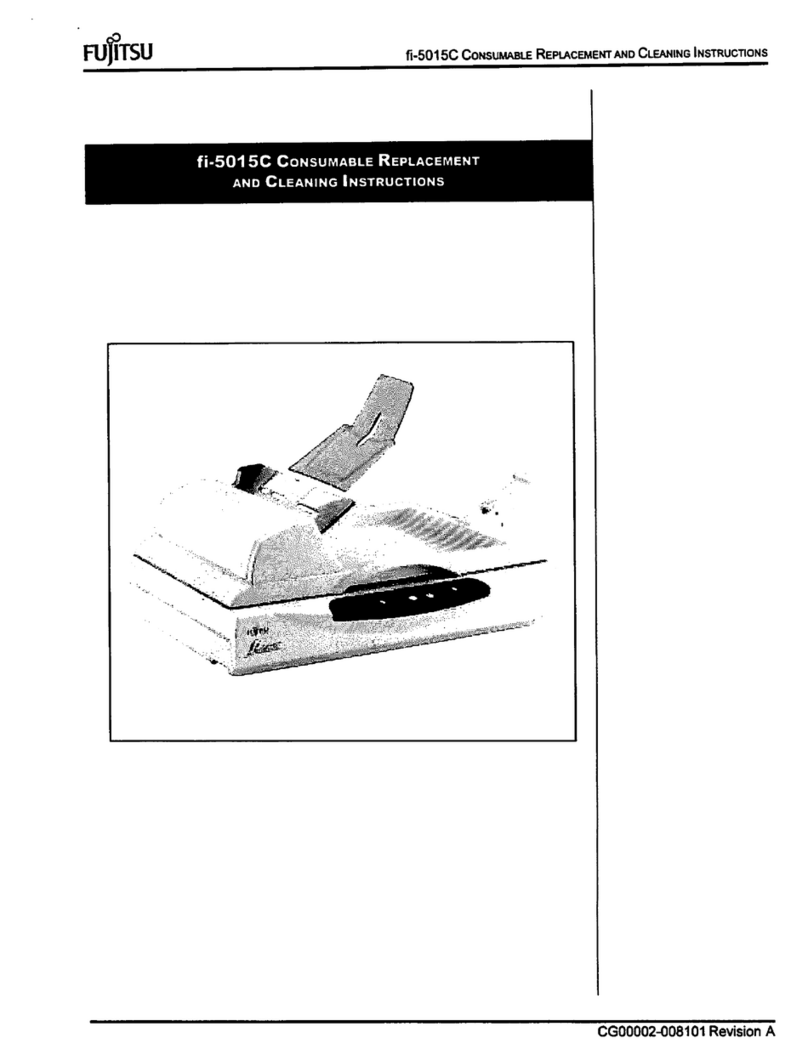
Fujitsu
Fujitsu FI-5015C Consumable replacement and cleaning instructionsmable replacement and cleaning instructions
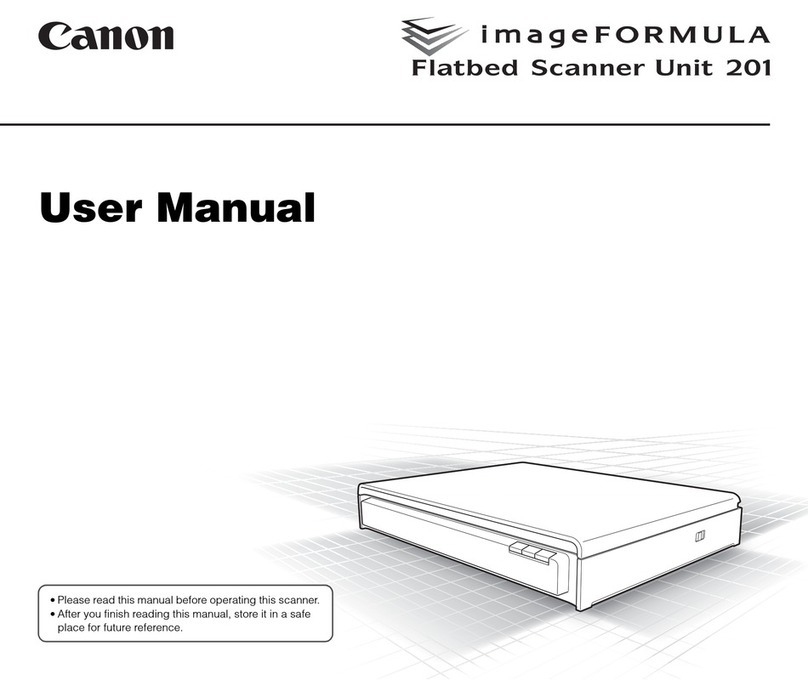
Canon
Canon imageFORMULA 201 user manual

Canon
Canon CP Printer Solution Disk Version 4 Quick user guide

Mustek
Mustek ScanExpress A3 user manual
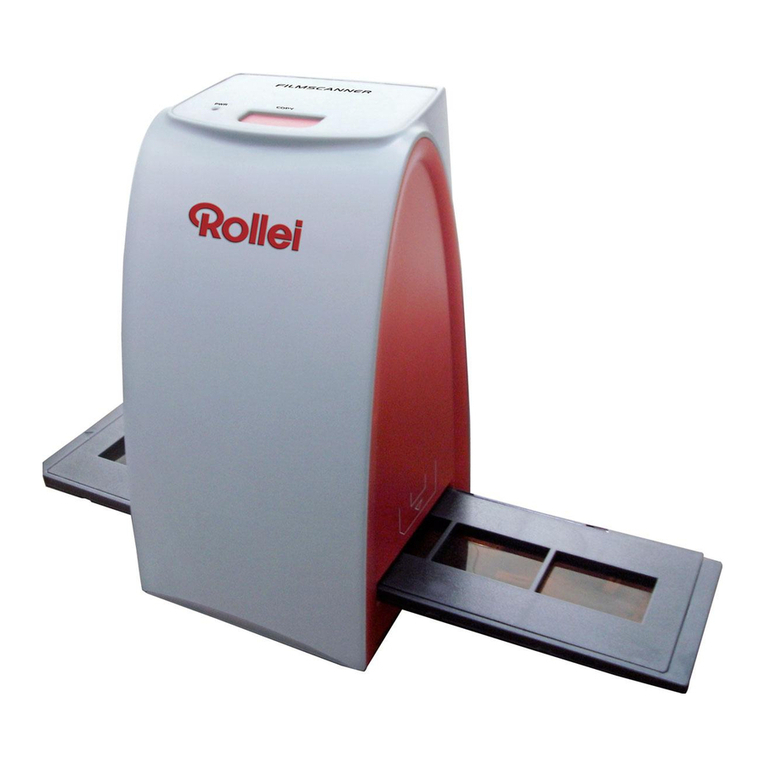
Rollei
Rollei DF-S 50 datasheet
